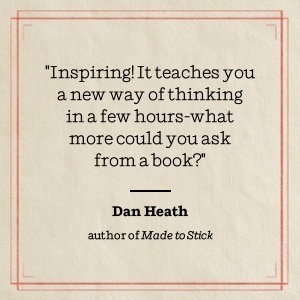

Full description not available



A**K
1st edition still a good deal, but this one is worth considering
If money or portability are your primary considerations, then get a used copy of the first edition, as it communicates the central ideas in an almost identical fashion and is easier to carry around. However, if a few more dollars and a slightly-bigger book don't bother you, consider buying this new edition, as it's subtly-revised diagrams and improved explanation of key brain science concepts make it easier to understand on the first read. For more detail on the differences between this and the previous edition, read on...Both books are hardcovers and much of the content (including, sadly, the Resources listed in the Appendix) is the same. However, there are a number of important differences between these editions:SIZEAt 8.2 x 8 x 1.3 inches, it is bigger than the first edition, which clocked in at 7.1 x 7.1 x 1 inches. While this does allow for the pictures to be bigger and slightly easier to see, it also means a larger, oddly-shaped book to carry around. This only matters if, like me, you like to schlepp your favorite books around and carry them on the bus.PAGES & TEXTIncludes more pages at 304 pages, rather than the previous edition's 278, making it a mere 0.2 pounds heavier. 10 of those additional 26 pages are the new "Appendix A: The Ten (and a Half) Commandments of Visual Thinking." This is a very useful set of 11 rules of thumb to keep in mind when applying Roam's visual thinking technique. Most, if not all, of these rules are mentioned elsewhere in the book, so don't let this appendix be your only reason for purchasing the newest edition. In addition, these 11 rules are summarized nicely in a slideshow elsewhere on the internet ([...]/visual_think_map/the-10-12-commandments-of-visual-thinking-the-lost-chapter-from-the-back-of-the-napkin). Nonetheless, it is helpful to have them laid out, visually, in one place. Another 8 pages are the new Foreword, which explains Roam's experience of visually attempting to sell the idea for this book to the publishers at Penguin. While interesting and a good example, it is also not a reason to buy this edition.COLOR & PICTURESInstead of just black text/pictures, red is now used to highlight chapter headings and subheadings, as well as help readers distinguish between parts of Roam's originally-all-black illustrations and diagrams. This is astonishingly helpful - as it is much easier to understand his diagrams at first glance. Given the table on page 66 (identical to that on page 72 in the first edition), it is no surprise that a small change in color makes it easier for our eyes to distinguish among the parts of his diagrams. In addition, he has added some additional sketches in the book to better visually explain some of his concepts. I was particularly impressed by his improvements to chapters 4 and 5 on how to look better and see sharper. Both his pictures and his text in this section have been revised to provide more clarity for potentially-confusing sections that are partially dependent on communicating a few key brain science concepts. His diagrams illustrating the 6 ways of seeing/showing are also a bit clearer than in the first edition.OUTLINE OF BOOK CONCEPTSFor an outline of the major concepts in the book, see my blog post ([...]/blog/review-back-of-the-napkin-solving-problems-and-selling-ideas-with-pictures-expanded-edition-2009) for more details.
E**O
The Book that Changed My Way of Seeing Things
The first time I noticed Dan Roam's name and the title of this book was from his liner notes on the back of Ken Watanabe's book - Problem Solving 101 (also an excellent book on its own).I went curious since his liner notes there is quite different (instead of using words and sentences, he used hand-drawn images) and later on browsed his name thus stumbled upon his website ([...]).Impressed with the website contents (which practically is the glimpse what the book contains), I immediately take a decision to purchase this book in Indonesia (where I live) but failed due to no stock in any Indonesian bookstore.This book really changed my way of looking at things, perspectively speaking. It teaches me how to think in a more simple fashion. I am an in house lawyer of a multi-national company, dealing with complex problems everyday, raised by people from many different cultures and mother language to speak (and listen). This book really helps me in such a way I am now able to deliver improved and constructive advices by graphical and visual form - and I am talking about legal advices here!Read the first chapter and go forward and you will come back for more. This book never find dust on the top of my desk, functioning as my daily reference. It also help in my coaching to my subordinates too.First time I thought, well... problems now seemed easier to solve. Actually it is not. It was me (or all of us) who had not yet see the problems in a different perspective, instead to think more simple and efficiently. Previously I made a lot of presentations with zillions of slides with tons of boring descriptive sentences/words, but now everything been kept simple in just 3-4 slides - and GRAPHICAL. No more heavy and lengthy words in a legal presentation session - you cannot just imagine if you have not read this book.I have to admit that this book was my first attempt of online purchasing via Amazon (another kudos to Amazon for convincing me to come back and buy more for sure).